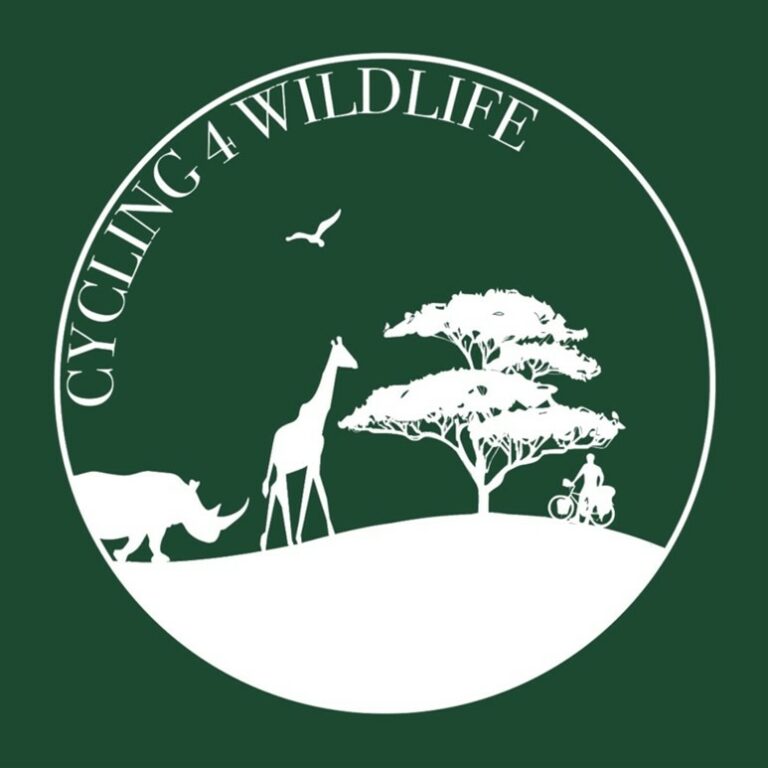We left Nkhotakota on the morning of Jan’s 27th birthday. Earlier that day during breakfast, Linda had come out with a massive custard cake to celebrate the event. Since we couldn’t leave this kind gesture unfinished, the first hours on the bikes were a struggle not just against the hills but also our stomachs. In the two days that followed, we cycled 260 km from Nkhotakota to Monkey Bay, a pensinula (rather than a bay) on the southern shore of Lake Malawi. We were told Monkey Bay was a popular place among tourists, so we figured it would be the perfect place to celebrate Jan’s birthday in style, and worth the extra day of cycling it would take to get there. In spite of all our anticipation, our time in Monkey bay turned into a mild deception. Instead of cocktail bars filled with Scandinavian girls, all we found was an obscure pub with large flatscreen TVs, filled with a few lone wolves and a prostitute named Daisy, who hoped to add four Dutch boys to her clientele.
After a rather unspectacular birthday party, the next day we were back en route to Liwonde. On the road we cycled past two local lads holding a barn owl by its wings, displaying it to us as some kind of trophy. Puzzled by this strange encounter we cycled on towards Liwonde, where we arrived on the afternoon of the 16th. At the gate we were welcomed by Charles, the park’s funding & reporting manager, who had organised our stay and who had compiled an action-packed itinerary for us. At the reception, a few kilometres further down the road, we met Dave, the park manager, and his wife Erica. Dave is one of those guys who just breathes a military past. His whole appearance commanded instant respect, so when greeting him I noticed I stood a little straighter than usual. But commanding as he might appear, Dave, as well as Erica, gave us a very warm welcome. With the two of them driving in front and with Charles driving behind us, we were escorted to Chimwala Camp, where we would stay for four nights. During the short ride to the camp, we cycled through dense mopane forest and wide-open floodplains filled with kudu, warthogs and impala. Right away the vegetation caught our attention. Everywhere we looked, the grass was no taller than on the sacred tennis courts of Wimbledon. The grazing pressure must have been incredibly high. Later we would find out that this was due to the building of a new hydropower station in Liwonde town, which had caused unusually high water levels in the Shire river. As a result, a large chunk of the park’s grazing area was now under water, so that all the grazing animals were now squeezed together on just a tiny bit of land.
When we arrived at Chimwala, a beautiful camp on the face of a rocky outcrop (chimwala literally means “large rock” in Chichewa), we met Charles (the chef), Thoko and Bike. The three of them would take amazing care of us in the coming days, preparing one amazing meal after the other. We weren’t sure whether we had deserved this kind of luxury, but we certainly enjoyed it. Shortly after we had settled in, Nelson, our guide, came to pick us up for a late-afternoon game drive and sundowners. Driving over the floodplains we enchanted by the stunning scenery of the park. We stopped for sundowners on the edge of the water, right where a herd of elephants was feeding on a large baobab. Then, not far from us to our left, a beautiful black-maned lion appeared. He walked a few metres before lying down at the base of a termite mount, from where he proudly looked out onto his hunting grounds. Nelson told us that this was one of two brothers that dominate the lion prides of Liwonde. Lion politics can be a bloody affair: when two males fight for the dominance of a pride, they often kill each other’s offspring to bring the females into oestrus and start a bloodline of their own. This behaviour, known as infanticide, means lion populations are prone to dramatic fluctuations. But in Liwonde, Nelson told us, lion dynamics had come to an equilibrium. Now there are two dominant brothers who have formed a coalition, and although they tend to stick with their own separate prides, they make sure that when a female comes into oestrus, the both of them mate. In this way, they don’t know who the father is and look after each other’s cubs as if it were their own. This arrangement, which I’m happy I don’t share with my own brother, has ensured the steady growth of Liwonde’s lion population in recent years.
After our sundowners we headed back to Chimwala, where we sat by a fire with Nelson and ate the first of Charles’s many delicious creations. After the four of us thought we couldn’t eat any more, Thoko and Bike appeared with a chocolate cake for Jan, his second birthday cake in four days. We knew John from Nkhotakota had been in touch with Charles about us, but from that moment on, it felt as if all the parks we visited were in some kind of competition for who could spoil us the most. Lying in bed that night with very full tummies, we could hear the lions calling close by. Liwonde was definitely trying its best to gain the lead.
The next morning, Nelson drove us to the head office, where Dave gave us a presentation on the park’s history. Despite an upcoming board meeting, he didn’t spare any time explaining us the ins and outs of his work, including the multitude of challenges he and his team face. In 2015, African Parks took over management of Liwonde after many years of negotiation with the Malawian government. At least in name the flagship of Malawi’s reserves, African Parks had had its eyes on Liwonde since its founding in 2000, but up until 2015 Malawi’s government had not been willing to relinquish control of the park. Due to a lack of funding and mismanagement over this time period, the park had been severely neglected. When the mandate was finally signed, AP inherited a park in ruins. With over a million people on its boundary living in dire poverty, Liwonde was targeted for firewood and bushmeat up to a point where the park was all but poached out. The mopane forest had become silent. The game that remained had found its refuge on the floodplains along the Shire river, the only place where snaring is impossible. On top of that, the roads were neglected, the fence was down in most places, and there was only one vehicle, which didn’t work for most of the time. The challenge was thus enormous, but quickly things started going in the right direction: in the first year alone, over 36,000 snares were removed. New roads were graded, a 240-kilometre fence was built, and solid law enforcement systems were put in place. Meanwhile, over two hundred elephants were translocated to Nkhotakota to ease their impact on the ecosystem. Despite years of severe poaching, Liwonde’s elephants had managed to survive. Now that a new fence was built, it was important to keep their numbers at a sustainable level. As elephants moved out, other animals moved in. In 2017, seven cheetahs were introduced, followed by ten lions in 2018, 17 black rhino in 2019 and eight wild dogs in 2021. While the cheetahs, lions, and rhino are thriving today, the wild dog reintroduction took a dramatic turn. After breeding successfully for two years, a single poisoning incident killing the entire pack meant the dream of wild dogs in Liwonde turned into a nightmare.
The tragedy raises the question if the word “incident” is appropriate here. Although the number of poaching incidents has steadily decreased since AP took over management, it is still shockingly high. And with the million people living on Liwonde’s boundary (of which about 50 per cent is under the age of 18), these “incidents” will most likely remain structural. What’s more, due to a lack of funding the park’s law enforcement team has lost its only helicopter, making it much more difficult to respond to poaching incidents and bring offenders to justice. Even with a helicopter, however, catching poachers will only ever serve to fight symptoms. If you have read my previous blogs, you will not be surprised to read that without education and economic development, the underlying disease is unlikely to be cured. I can write page after page about why environmental education is so vital, but no words of mine can explain it better than the story of our guide, Nelson.

Nelson
When Nelson was thirteen years old, rangers from Liwonde visited his village to talk about the importance of the park for surrounding communities, and hence the necessity to look after it. The experience made a deep impression on the young Nelson, who henceforth decided to become a ranger himself. The more we talked to Nelson, the more we came to learn about the tangible outcomes of environmental education from the perspective of the receiver. In the evening, as we were sitting by the fire, we told Nelson about our experience with the two guys alongside the road who had caught a barn owl. We asked him why people would catch a harmless animal like an owl and what they would do with it. ‘They kill them,’ Nelson told us plainly, ‘owls are associated with witchcraft here. A perched owl on your roof is seen as a bad omen, so people will throw rocks at it and eventually kill it.’ For a moment we were silent, staring into the flames. Then Nelson added: ‘I used to do the same, back when I was blind.’ I found Nelson’s metaphor of blindness deeply moving. Our lack of knowledge about nature is one of the core causes behind its destruction. After all, one cannot care for what one doesn’t know. Though we are raising money for environmental education in Africa, let me stress that this is not just an African problem. The lack of knowledge about our own wildlife back home has resulted in one of the most nature-depleted countries on earth: invisible to the naked eye, for decades we have ignored the silent killer known as nitrogen deposition. Hidden away underwater, we looked away as our seas were all but fished out. Ignorant of our past, we have forgotten the ancient forests that once covered our land and have come to see the sheep-filled heathlands that replaced them as indigenous habitats, spending millions to preserve them. As George Monbiot wrote about similar processes in the UK, this is like cutting down the Amazon rainforest and glorifying the cattle farms that replaced them as “wild” and “unspoilt”. In comparison, then, Africa has done amazingly well.
On our third and last day in the park, we visited several sites on the park’s periphery where AP is supporting economic development. One of these was a communal farm that the park supports with an irrigation scheme. Here we met Justin, the initiator of the project, who had grown up living off fish and bushmeat from the park. ‘Growing up this was all we knew,’ Justin told us, ‘Our parents taught us how to hunt and fish. We didn’t go to school.’ But at some point, just over a decade ago, Justin decided to alter course. Realizing the many benefits a healthy park can provide to neighbouring communities, he concluded that poaching was no longer a sustainable way to support his family. In 2012, he started his farming project and encouraged others to follow his example. However, in the absence of any infrastructure, the only way to water the crops was with buckets that had to be carried for several miles from the nearest borehole. When AP took over management, the decision was made to invest in a new borehole and a petrol-fueled pump to irrigate the crops of Justin and the farmers that joined him. The irrigation scheme allows more and more people to make a living without having to venture into the park, easing the pressure on its wildlife. Today, the members of Justin’s initiative can make a decent living, selling their surpluses on the market. Julius, Justin’s son, sold 1.5 million kwachas (roughly €1,500) worth of onions last year. For reference, a school teacher in Malawi earns about €1,000 annually. What’s more, due to the potentially catastrophic consequences of elephant breakouts (see previous blog), the farmers assist the anti-poaching units by conducting patrols the park’s perimeter. In this way, the irrigation scheme truly is a win-win situation.
Despite the myriad of challenges Liwonde faces, the overall trend here is undeniably an upward one. Recognizing these achievements, in 2018 the Malawian government entrusted African Parks with the mandate for the 30,000-hectare Mangochi Forest Reserve, which borders Liwonde in the north. Through this action, an area of well over 90,000 hectares is now under AP’s protection. With dedicated people like Nelson, Charles, Dave, Erica, Lawrence and Justin looking after the park, we are confident that Liwonde will stay on its current course. On the day of our departure, Nelson went back to his village to talk in front of a crowd of no fewer than 500 schoolchildren, hoping to inspire the next generation to follow in his footsteps.


















